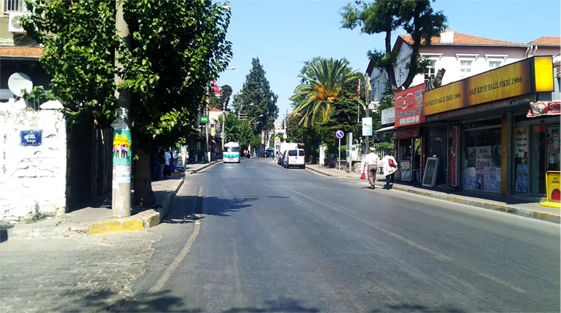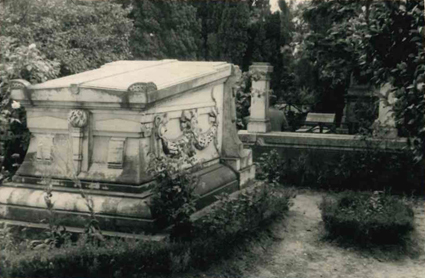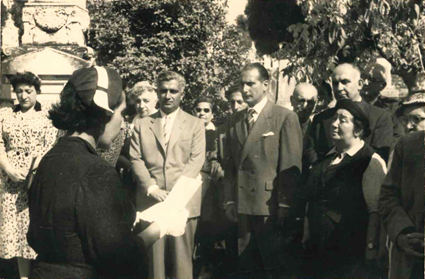
The Contributors
by Alexandre Vladesco

My origins are Romanian through my father and Armenian on my mother’s side. Not long ago, I became interested in the history of my Armenian ancestors, a story that had not been transmitted to me. Indeed, my grandparents have always been quite discreet about their parents’ story.
My mother said that the family enjoyed a certain notoriety in Smyrna, especially through the sale of rugs. During my research, I realized that this notoriety did not only come from there. Later, I discovered that the history of my ancestors was intimately linked to the economic, social and political history of Smyrna.
The four families I come from are the Essayan and Frenkian by my grandfather and the Ekisler and Spartalian by my grandmother.
About the Ekisler and Hayrabedian families
According to Christian Dedeyan1, the Hayrabedian family descends from an old princely family. One on the most famous ancestor of this branch was Pap Mélik of Dizak that lived around 1530. The first members of my family, Hayrabedians at the time, to settle in Smyrna or its surroundings came in the second half of the 16th century. The Ekisler name came from the fact that Artin Hayrabed, the priest of Odèmis parish and his wife Irizkine had twins at the early 18th century. From this point the family took the name Ekisler from the word ‘Ikiz’ meaning twins in Turkish.
The two brothers Hatchadour and Garabed made their fortunes in the silk and gold thread trade. They successfully expanded their businesses throughout Europe and mainly in Lyon, France. Qualified as an amira, several members played an important role within the organization of the Armenian Community including:
Avédis Ekisler son of Garabed, was the Surp Lusavorçyan hopital trustee and helped building the chapel of the same name in 1842. In the middle of the 19th century, with Krikor Baboyan another member of the family, he financed the reconstruction and the modernization of the Saint Mesrobian school which was initially a simple wooden kiosk. In 1886, Hovhannes Spartali endowed the school with a scientific laboratory and a library of more over 2000 books. Eventually, this school had a reputation far beyond Smyrna and received students from the Armenian community of Constantinople and other cities of the Ottoman Empire.
Marcar Ekisler son of Hatchadour, was the ichkhan2 for the Armenian community. A family anecdote tells that the cathedral of Saint Stephen mass never began without him. His wife, Elizabeth Balta Zade of the Balta family of Caramanie who were treasurers and bailiff of the pashas.
Charles Ekisler son of Marcar, was ichkhan from 1845 until his death in 1863. He fathered two daughters including Sophie who married Tacvor Spartali. He is best known today for having bought the house of the Baltazzi in Boudja and for having built a large mansion in Kordon, the Bella Vista which is currently the Atatürk Museum.
1 “les Dedeyan, leurs titres, leurs alliances” and “Les Dedeyan, compléments”.
2 Ichkhan was the representative elected for 9 years by the Armenian community. As this title retained a feudal and nobility character, it was replaced in 1863 by yerespokhan (deputy or representative).
About the Spartali family
The history of the Spartali family began in Isparta. Originally the name Ispartaliyan, later became Spartalian and finally Spartali. The brothers Agop and Hovhannes, sons of weavers, were in the carpet business in Kula, Uşak and Gördes.
Agop Efendi Spartali, the eldest of the family, is referred as “a long-standing member of the Grand Council having the rank of bala or first class official and therefore was participating in the Grand Council”3
So quite naturally he became a deputy when the first constitution was established. He then represented the provinces of Aydın, Saruhan and Menteşe. In the end, he ended his mandate to develop the commercial activity related to the carpet trade. In 1868 he was also on the board of directors of the Smyrna docks. Major modernization work on the port had been entrusted to the Dussaud company. This project lasted several years and was completed by 1870.
Through my research I saw Hovhannes and Agop were appreciated by their community. In 1845 Agop financed the construction of a school and a church in Isparta. By their contributions in the repair of roads, maintenance of fountains and donations to schools and churches. They did not forget the Muslim community on holy days and they greatly helped the development of their hometown.
Hovhannes. was described in a travelogue as a very pious man. During a pilgrimage to the holy land he met Yessayi Garabedian who would become the Armenian patriarch and paid him a trip to Europe to complete his education.
Agop Efendi Spartali probably had 2 sons: Tacvor and Stepan and possibly 3 others: Yervant, Mesrob and Zareh. I thank in advance anyone who could give me more information about these three brothers.
Stepen was representative for Aydın in 1894 and was re-elected to the same position on September 2, 1897. He became deputy of Smyrna in 1908. He had a societal project which was a first in the Ottoman Empire. Set up homes on land near Smyrna for the less well-off classes. He had planned to build places of worship for each community, schools and a police station. Although having obtained all the necessary authorizations from the Ottoman authorities, this project was not successful.
Tacvor the eldest, developed the carpet sales activity by creating a company, TA Spartali and Co. There were branches of this company in all major cities: Cairo, London, Manchester, etc...
He participated in the creation of the O.C.M. (Oriental Carpert Manufactured) cartel which helped to industrialize the manufacture of rugs. At the height of activity, the cartel counted more than ten thousand weavers. You can also find another article expanding on O.C.M. on this website. Additionally, he was a member of the Smyrna chamber of commerce in 1893 and 1894. He had 2 children Beatrice, the eldest, married to Baron Alberto Aliotti and Edouard, My great-grandfather.
Edouard Spartali oversaw the administration of the family’s property. He had two passions, boats and photography - gallery of examples. He was married to Iphigénie De Caravel, daughter of Agride (Agis) Giuseppe Emilio De Caravel who was vice-consul of Italy, Belgium and Spain at the Dardanelles.
3 quoted in Devereux, “The First Constitutional Period”
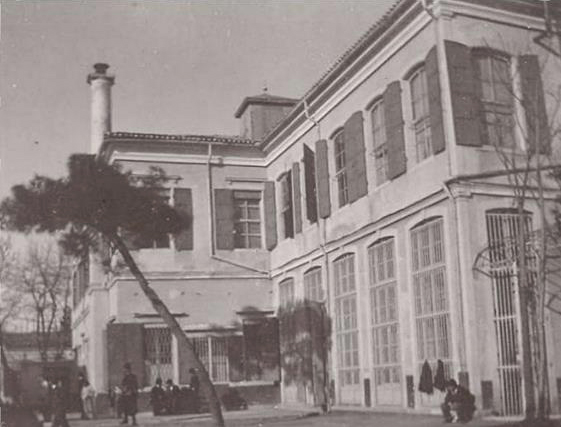
Tacvor Spartali had two-store building near Basmahane Station which he sold to Alexander Maclachlan who converted the building to an International College between 1875 and 1913 - postcard view of the same building below.
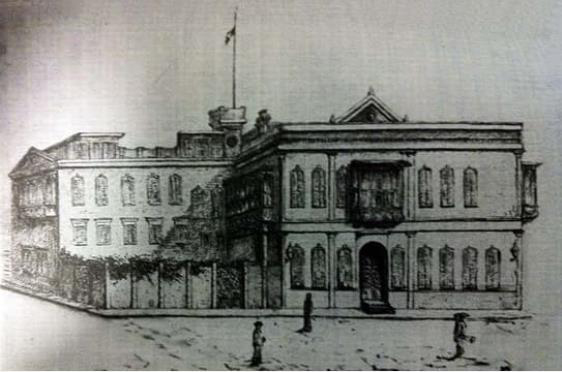
This building belonging to Tacvor Spartali was used as the American consulate. It was completely burned down during the Great Smyrna Fire. The buildings of the Ottoman bank also belonged to him and also burned down in the fire.
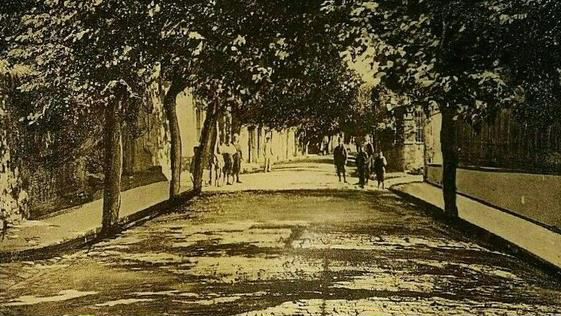
Boulevard Spartali - Boudja - Smyrna
The current Buca istasyon Caddesi, Izmir
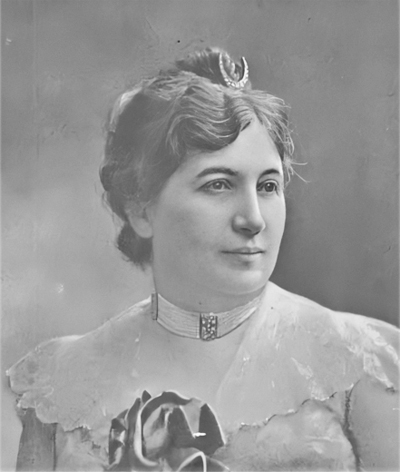
Sophie Ekisler who translated Graziella in 1872, a novel by Alphonse de Lamartine and dedicated this book to Hagop Spartali her future father-in-law.
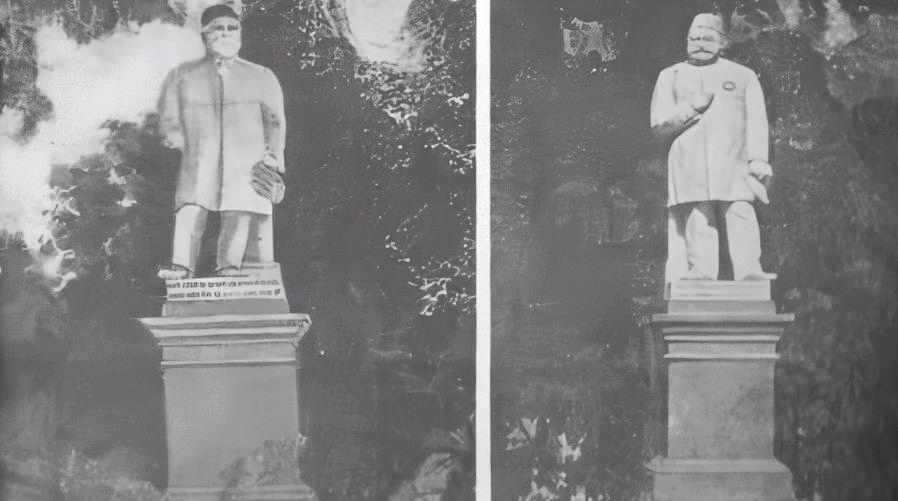
Statues representing the two brothers Agop and Hovhannes Spartali. They were erected in the main courtyard of the hospital by the Armenian community in thankfulness for having financed the reconstruction of the Armenian hospital of Surp Lusavorçyan which had burnt down in 1845. From that moment, this hospital was run as a charitable organization, it mainly received the elderlies and the poor.
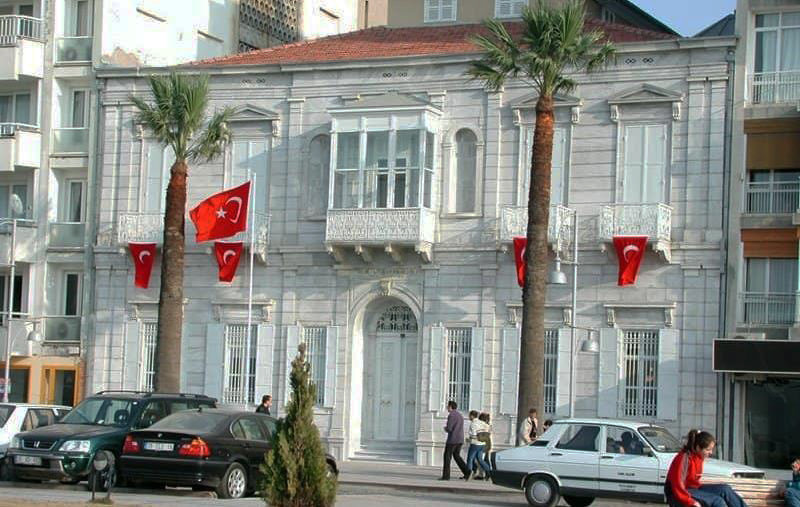
In 1875-1880, Tacvor had a large manor built in Kordon, Bella Vista (now the Ataturk museum). Hüseyin Avni Pasha, also a native of Isparta and governor of Aydin, became a friend and regularly visited him and stayed there. Tacvor and his wife Sophie Ekisler received also the Sultan there before the massacres. Below a postcard view of the same building in the centre during Ottoman times.
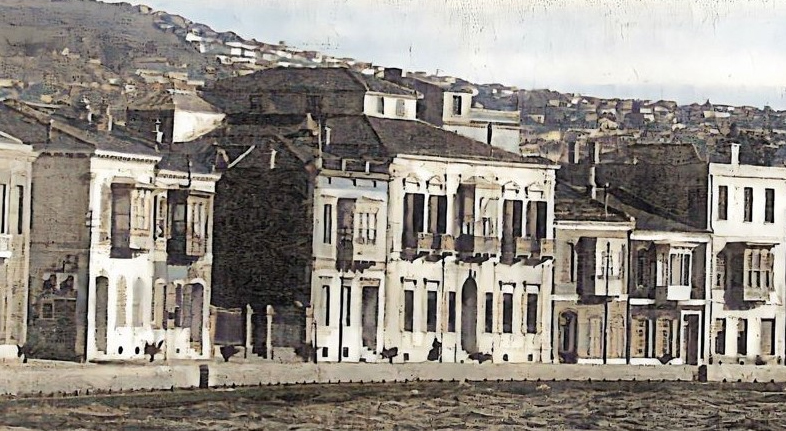
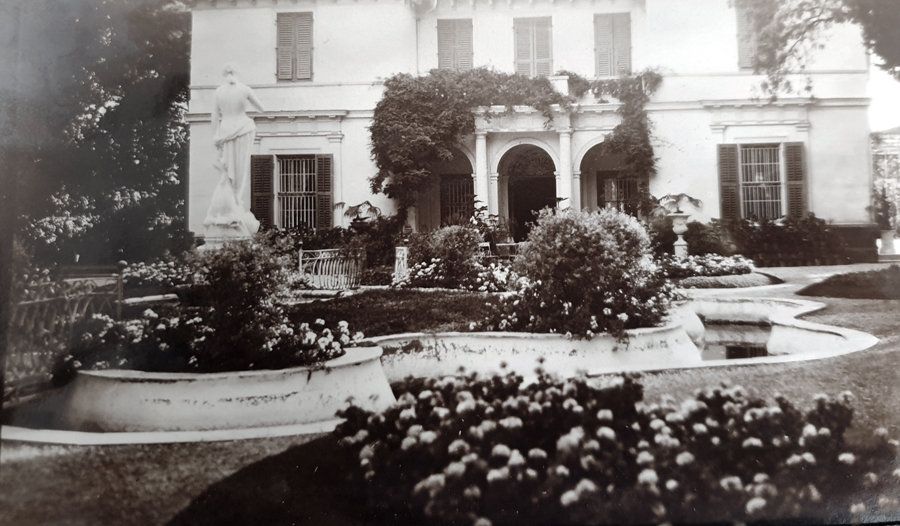
The house bought from the Baltazzi family. Tacvor also received one of the Sultan’s daughters there. After the Treaty of Sèvres in 1920, the family home became an international stake. Italy which wanted to occupy Anatolia tried in vain to buy the pavilion by giving instructions to the director of the Ottoman Bank Suciani. In order to prevent this attempt, Antonio Athenogenis4 collected money from his community. Not having raised enough funds, the owner Tacvor Spartali greatly reduced his demand on the price of the house so that it would go to the Greeks of Smyrna. Finally, A. Athenogenis donated it to Elefthérios Venizelos. Subsequently it became an orphanage until 1922. Then it was converted into a public school. (It is still a school).
4 Ant. Athenogenis was a Greek lawyer and one of the most active community figures in Smyrna. He has the head of several charitable movements. He was the curator of the Hellenic orphanage from 1914 to 1919, as well as curator and secretary general of the school for Homeric girls in the last years, until the great fire.
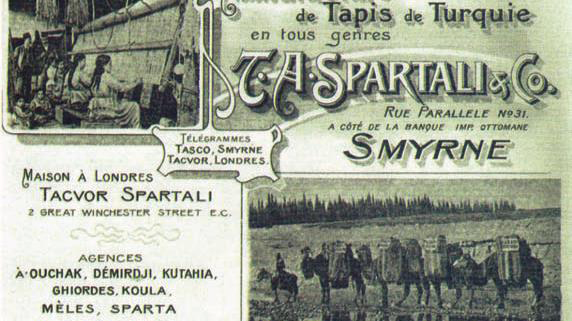
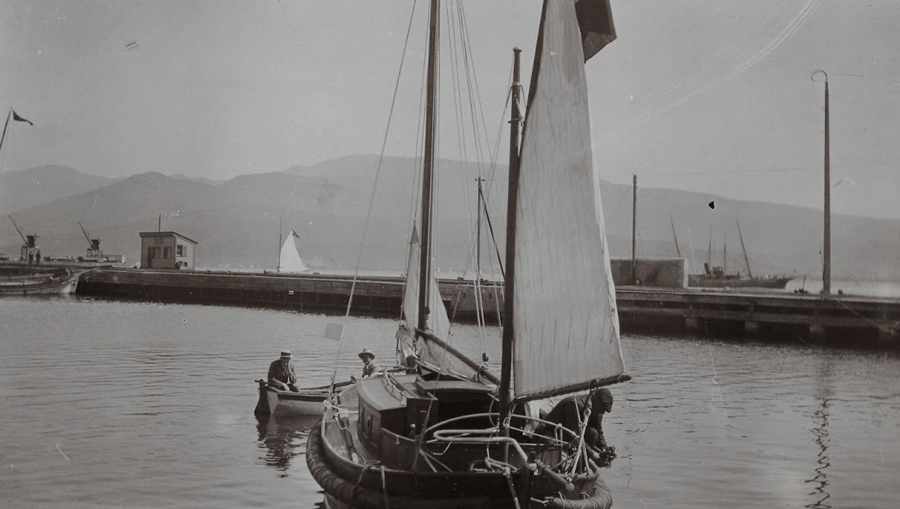
The yacht le Bice - affectionate diminutive of Béatrice - Smyrna
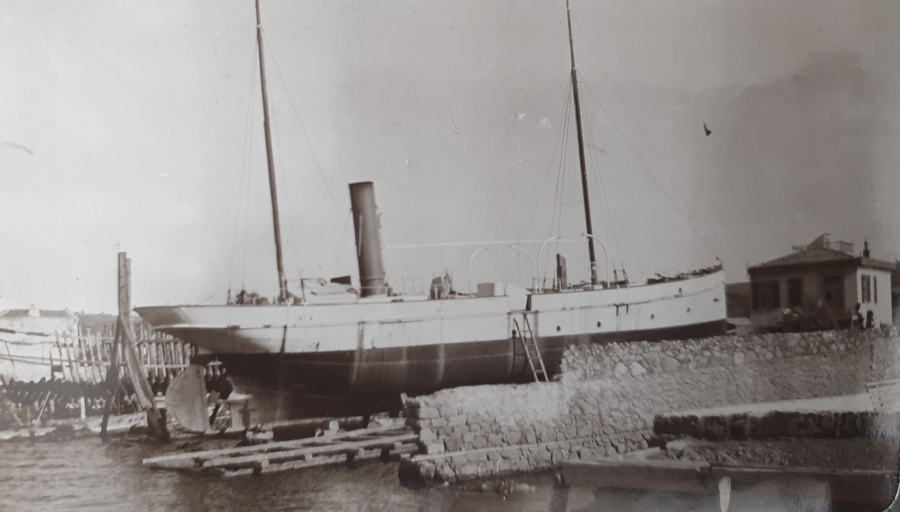
The Sophia (homage to Sophie Spartali) one of the Edouard Spartali boats.
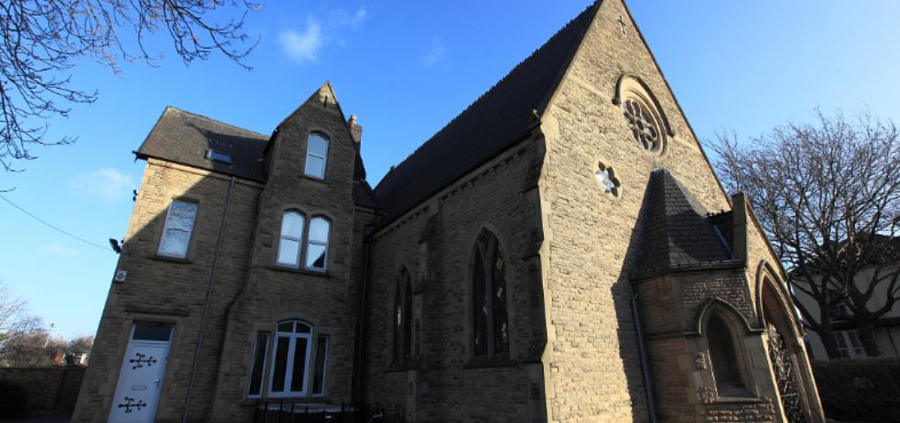
Around 1867 Vartabed Kiuroyan initiated the project to build an Armenian church in Manchester. To sponsor this project, great Armenian families were mobilized, including the Essayan Brothers, the Spartali brothers and the Ekisler family. The church was completed at the end of 1870. In 1873 the Shah of Persia, visiting Manchester, received some members of the Armenian community including a member of the Spartali family *Merchants in Exile: The Armenians in Manchester of Joan George

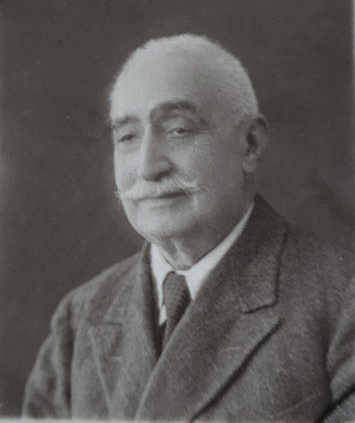
Stepan effendi Spartalian | Tacvor effendi Spartali
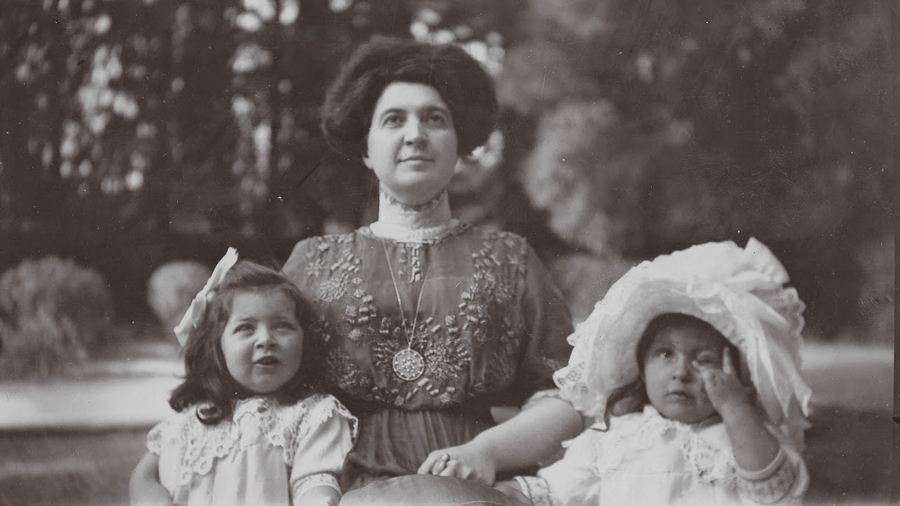
Baroness Aliotti born Spartali with her nieces Beatrice Spartali (my grandmother) and her sister Ida.
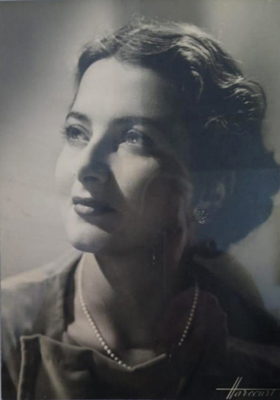
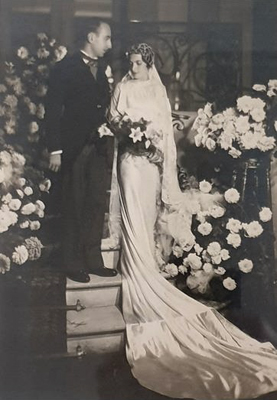
Béatrice Spartali Daughter of Iphigénie De Caravel and Edouard Spartali. Born January 18, 1908 in Smyrna (Turkey) - Died October 5, 2005 in Chatou (France).
She got married to Ohanes Frenkian. October 27, 1933. The wedding dress was designed and made by Ara Frenkian, her cousin who had a haute couture house in Paris.
My grandmother Béatrice Spartali spent her early years in Smyrna. She was in Vienna, Austria, with her aunt Béatrice Baronne Aliotti when the First World War broke out. She did part of her schooling there. At that time her father Edouard was probably in Manchester. Edouard Spartali came to France in the 1920 and settled with Béatrice. They lived at 65 rue du marché in Neuilly sur Seine (actually rue Madeleine Michelis). This house was probably sold before 1940.
A fine arts graduate in Paris, she married Ohanes Frenkian in Neuilly Sur Seine at the Hotel d’Argenson.
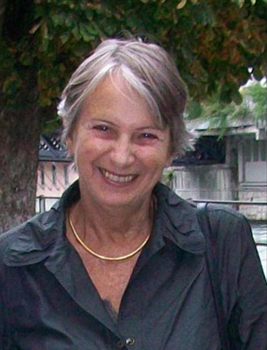
Odile Frenkian (my mother), daughter of Béatrice Spartali and Ohanes Frenkian
About the Frenkian family
The name Frenkian carries a part of the family history. Frenkian means "descendant of a Frank", it is certain that a crusader was at the origin of the name, this information has been transmitted from generation to generation.
The earliest known ancestor of the Frenkian family is Meguerditch Agha of Kayseri (Cappadocia). He had eight children including Gabriel Frenkian.
The Frenkian & Comp textile trading house was founded by the Frenkian family in Constanta (Romania) in 1870, during the Ottoman rule over the province between the Danube and the Black Sea. It is unknown if the founder was Meguerdich Agha Frenkian or his son Gabriel. However, what is certain is that the company was successful in Constanta and Manchester and headed for a time by the two sons of Gabriel, Haroutioun (my great-grandfather) and Meguerdich Junior.
In August 1880 the Constanta Chamber of Commerce and Industry was founded. By royal decree, several great local merchants were appointed as honorary members including Odyssea Despoty, Georgiu Cordina, Solomon Japhet and Gabriel Frenkian. He was also the president of the Chamber from 1896 to 1898.
Gabriel was awarded the Order of the ‘Crown of Romania’. He was president of the Masonic Lodge of Constanta and erected an imposing building on the 16th street Mircea cel Mare, in which the first communal post office operated on the ground floor.
Haroutioun Frenkian, was born in 1874 in Constantinople and studied there. In 1896, he joined the family business and took over the management of the company. He worked there until 1903. He also owned shares in other companies and made his fortune with the Arad and Chitila sugar factories. He owned so many buildings that one of the streets of Constanta was commonly referred to as Frenkian Street.
He was married to Zarouhi Essayan daughter of Ohanes Kevork Essayan. They had two sons Aram and Ohanes my grandfather. During World War 2 the whole family, except Haroutioun, fled Romania for France. Following the communist regime arrival to power, he was dispossessed of his property and died alone and poor. He is buried in Brasov, Romania.
His story is strangely confused with that of another Haroutioun Frenkian mentioned in Varujan Vosganian’s book ‘The Book of Whispers’.
More information on this family courtesy of Odile Vladesco
My father Ohanes Frenkian, usually surnamed Ono, and his brother Aram, were born in Constantinople. My grandmother Anna Essayan, from the stambouliote family, could not imagine her children be born elsewhere; even after marrying an Armenian, Haroutioun Frenkian, from Constantsa (Romania).
They had a rather pleasant childhood in Romania, cut by journeys and stays all over Europe, but this was suddenly interrupted in 1916. War pushed my grandmother out of Romania with her children and their nurse (English and an orphan).
It was the time to go forward through a disrupted Europe, using all possible ways of travelling, with the minimum of luggage, jewels sewn under their petticoats, through Russia on the eve of revolution, towards the northern countries – Sweden, Norway- and finally crossing over to reach England. England, the land of exile for many Levantine refugees. Friends and family received them for a while in Manchester and London. Then comes settling in France, in Neuilly sur Seine, where other friends and members of the family had also taken refuge.
Brilliant students both brothers, my father continuing to University and E.S.E. school, short courses to be able, as soon as possible, to ensure their participation in family expenses. Jewellery could afford the daily charges and would in the future buy a flat and help financially to create their business.
The engineer and scientist who was my father, added to the creative qualities and sense of enterprise of my uncle, after a common experience in a lamp manufacture ‘la lampe NEA’, allowed them to found their own factory ‘Astara’, which still exists today under the name of ‘Minilampes’.
The hazard that sometimes seems to trace our ways, decided that the ‘lampe Nea’ would be situated - rue de la paroisse, Chatou - in a neighbourhood which has been transformed for the construction of the new bridge; and, at this place was edified a building where my parents lived and died.
My grandmother Anna Essayan died without knowing my children, without knowing that her sons had founded new families in France where we now live for five generations.
But this is another story....
Odile Vladesco, born Frenkian
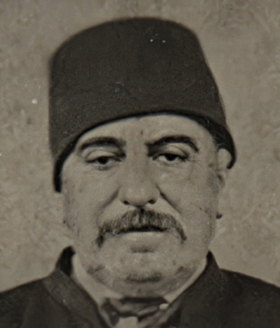
Agha Meguerditch Frenkian of Kayseri.
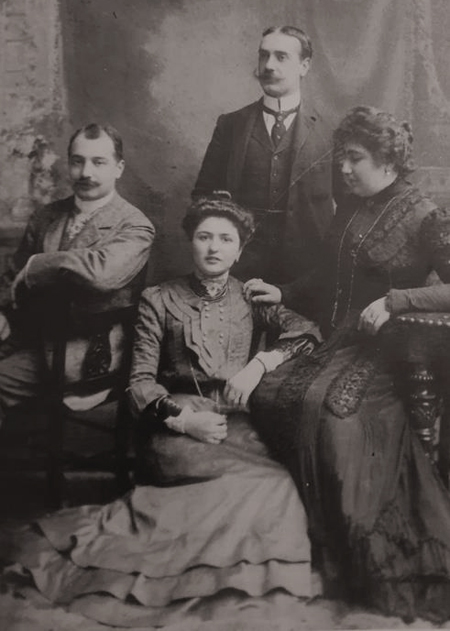
Left to right: Haroutioun Frenkian and his brother Meguerditch, Juliette Eknayan spouse of Meguerditch and Anna Zarouhi Essayan spouse of Haroutioun
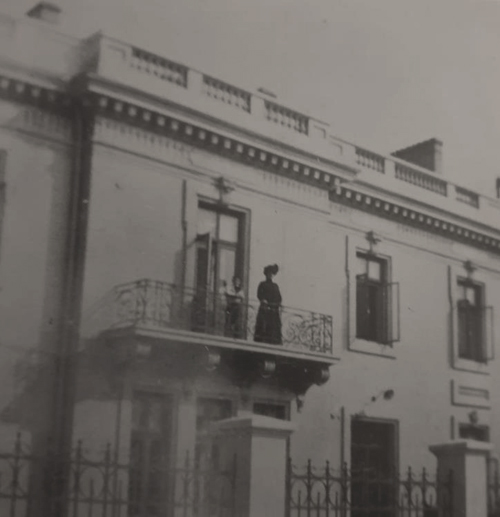
“Maison des Vignes” House of Gabriel Frenkian – Constanta, Romania: Ara Frenkian and his mother Juliette.
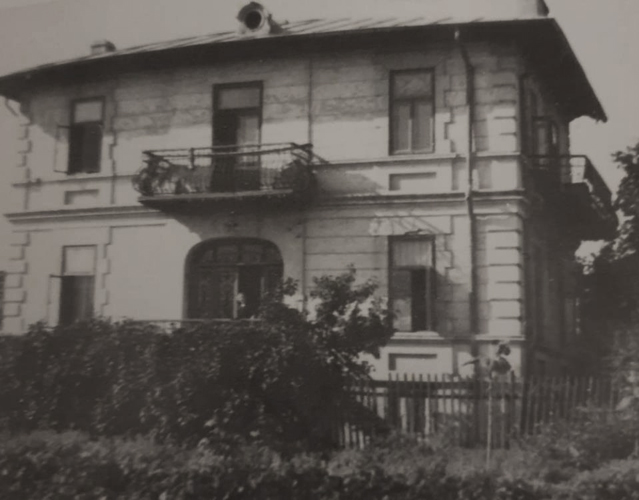
“Maison des Vignes” House of Gabriel Frenkian – Constanta, Romania
1956- Sisli cemetery, Istanbul / Speech by the director of Essayan School with Aram Frenkian (my uncle), by the tomb of Ohannés Essayan.
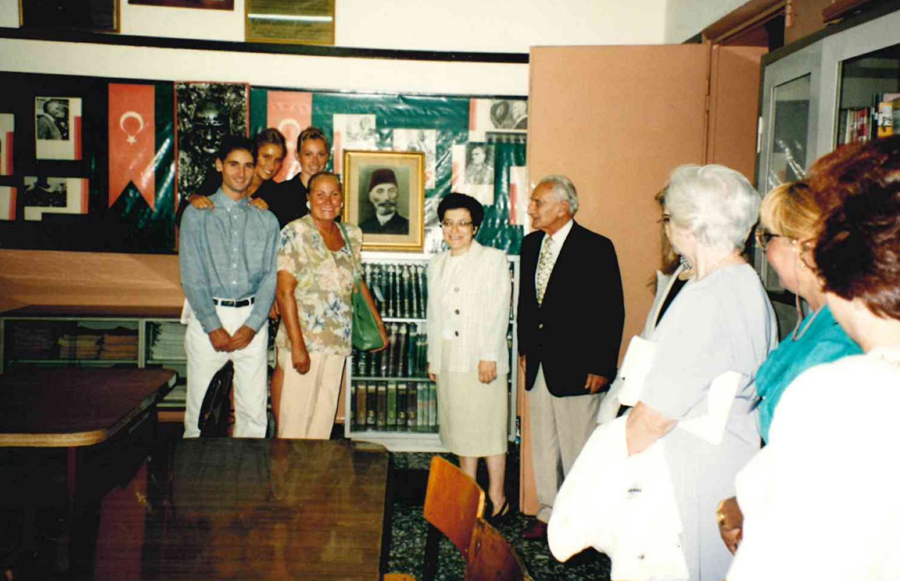
1995 - Essayan school, Istanbul. Near the door Aram Frenkian, in centre front: his wife Nicole and his son Michael. Behind her daughters Mélinée and Virginie.
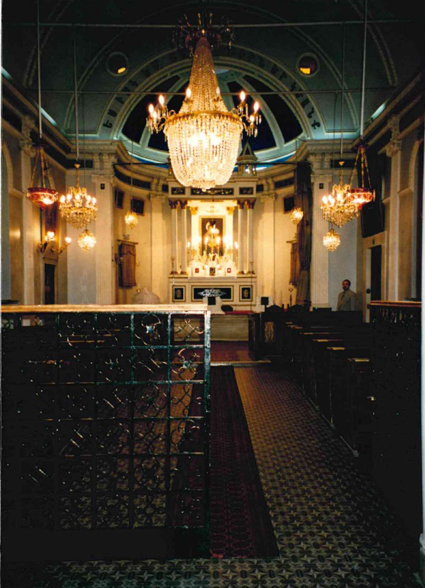
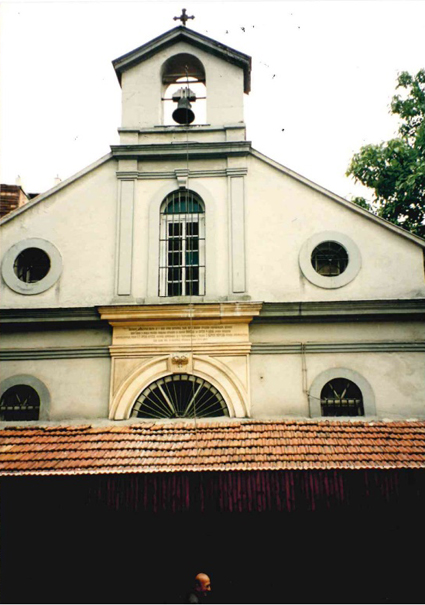
1995- Essayan school – Chapel, Istanbul
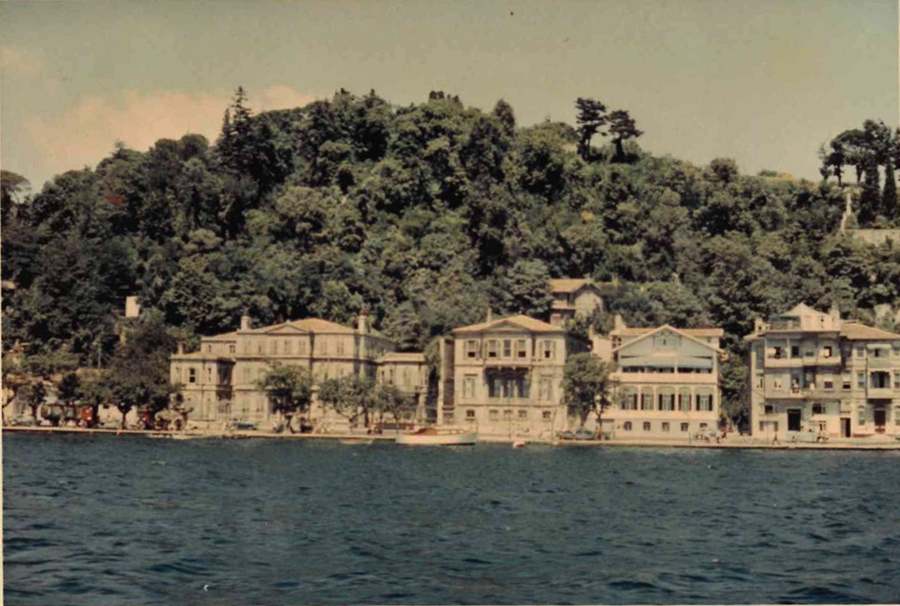
1969 - Buyukdere, Istanbul - From left to right: Abrahan pacha Eramian-Karakehia house, Essayan house, Kairserlian house. (Abraham Pacha was the grandfather of Kevork Essayan).
Thanks
I would like to thank my cousin Gerard Dedeyan, George Poulimenos co-author of ‘Smyrna Quay’, Arda Akaslan, Hovann Simonian administrator of the Armenian DNA project and Craig Encer administrator of this website for their help during my researches, Christian Dupin, father of my daughter-in-law, for his encouragement and my son-in-law Kevin Lauv for its proof-reading.


